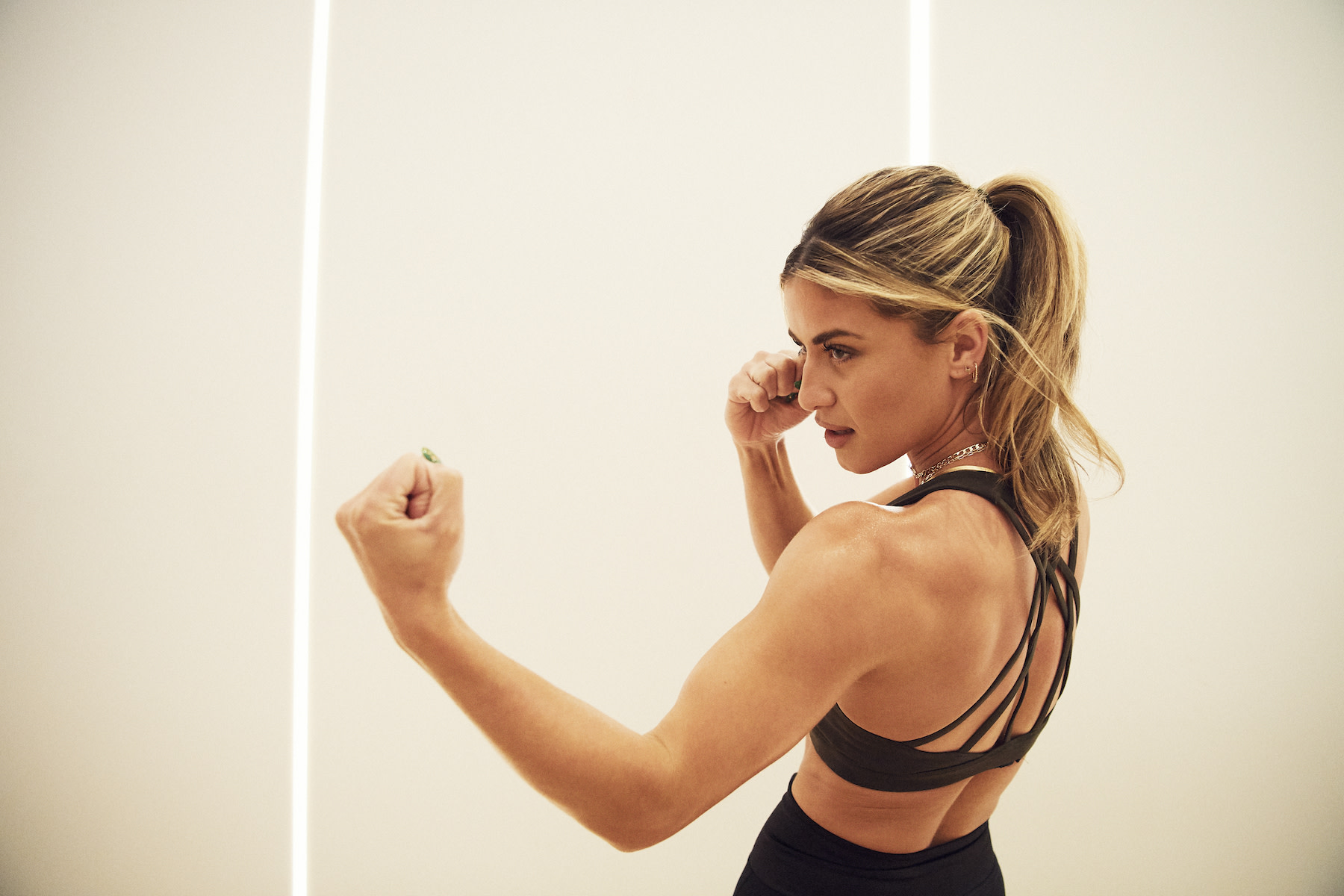
6 Boxing Moves to Master so You Feel Confident with Every Punch
Focus on form first and you’ll be set up for any boxing combination thrown your way.
By Kells McPhillips•
Boxers have their own lingo. If you’ve ever watched the pros on TV or taken a boxing or shadowboxing class, you’ve probably heard terms like “jab” and “cross.” And while it can sometimes feel like you’re just throwing out whatever version of a punch you can muster, there are actually six different boxing punches and some extra moves that make up the basics of boxing. Here, Peloton instructor Kendall Toole breaks down the offensive and defensive boxing moves you need to feel confident in your workout.
The Boxing Stance
Before you start throwing punches, make sure you’ve established a solid boxing stance. This starting position will allow you to move through your combinations and successfully defend yourself.
How to Find a Proper Boxing Stance
Start in a standing position. Make sure your feet are hip-width distance apart.
Your boxing stance will depend on your dominant hand. Take one step backward with your dominant foot. If you are right-handed, your right foot should be in back; if you’re left-handed (or, southpaw), your left foot should be in back. Keep a slight bend in both legs.
Position your front foot straight ahead, at 12 o’clock. If your right foot is back, point your toes toward 2 o’clock. If your left foot is back, point your toes toward 8 o’clock.
Make fists with both of your hands and position them squarely in front of your chin. Keep your elbows down. Your non-dominant hand should be slightly ahead of your dominant one.
“You never leave the stance,” Kendall says. “If you need to move, you stay in your position the entire time. You never cross your legs, or you will lose your balance.”
The 6 Key Boxing Moves
Boxing is like dance in that the moves are linked together to create choreography. In the beginning, the moves may feel unnatural. However, in time, stringing them together will become second nature.
As you improve at boxing, you’ll find that certain muscle groups become stronger, including your biceps, triceps, deltoids, and trapezius. However, the gains don’t stop in your upper body. One of the major benefits of boxing is that it’s a full-body workout. You’ll engage your upper body, core, and legs as you throw jabs, crosses, and uppercuts.
Boxing is a sport rooted in self defense, so even if you have no real opponent, such as in a shadowboxing class, it can be helpful to imagine an opponent to nail proper form. To guide you, the cues below may reference your invisible opponent.
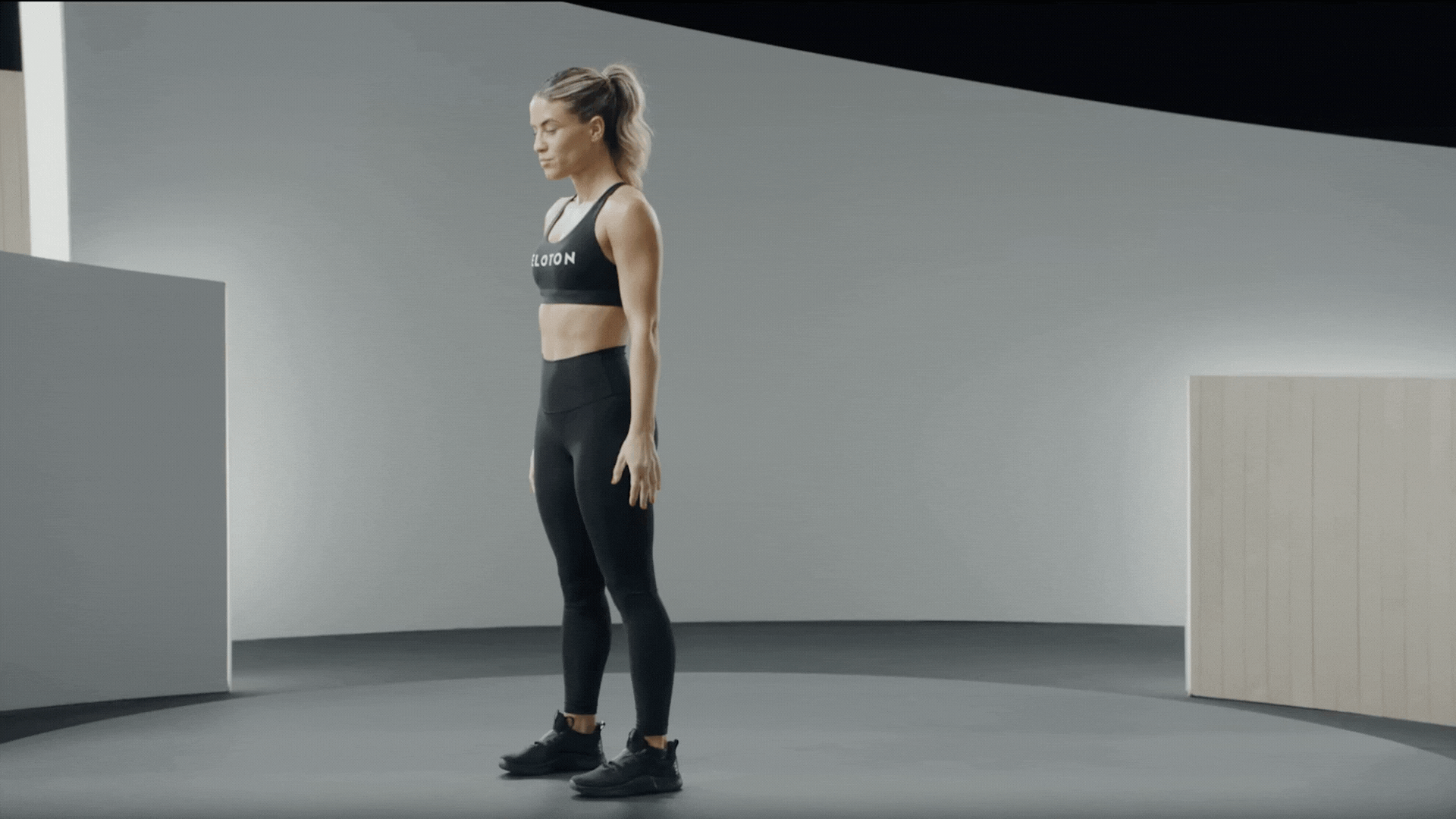
Jab
“Generally speaking, your jab is the most important punch in boxing—not because it's powerful, but because it establishes the distance between you and your opponent,” Kendall says. “It sets the stage for how close you need to be to your opponent.”
How to Throw a Jab
Start in a boxing stance.
Punch your front, non-dominant arm out, rotating your palm down as you extend your arm straight out at eye level. Your back, dominant hand should continue to protect your face.
Rotate slightly through your shoulders, core, and hips, but be mindful not to rotate your entire body. A jab is a quick, powerful movement.
Return your front arm to the starting position.
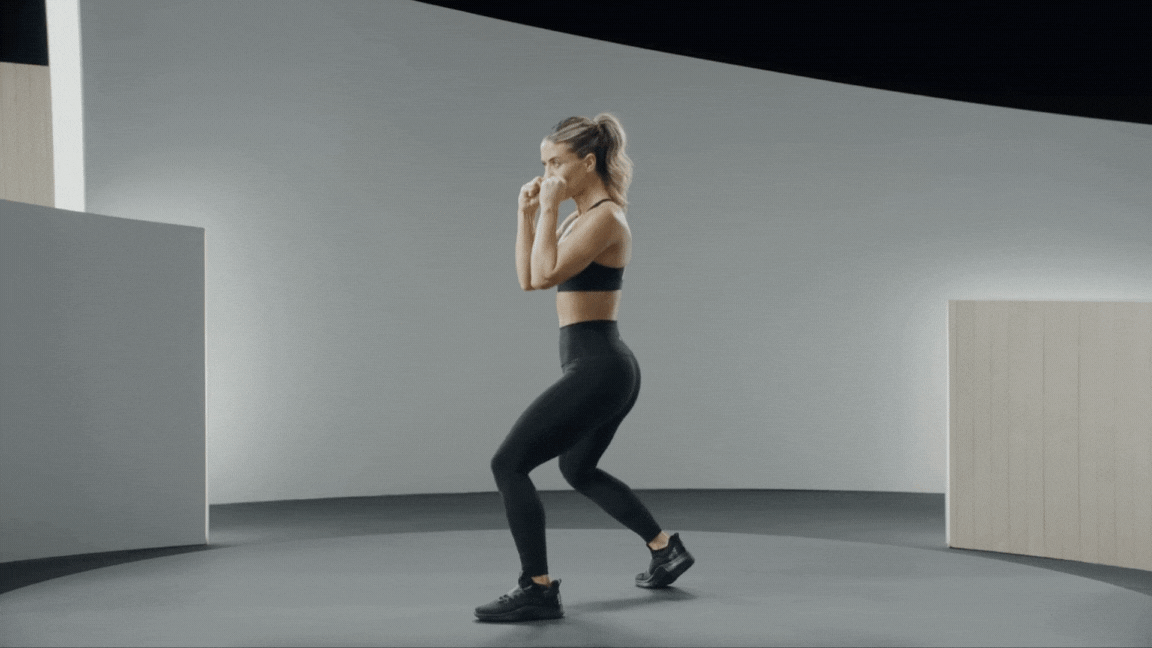
Cross
“The next shot is the cross,” Kendall says. “That's your second straight punch from your dominant side” You may deploy a cross in boxing after a jab, setting up the classic “one-two punch.” As Kendall explains, a cross usually connects to your opponent at the center of the face or the chin, but it can also connect to the belly area and the solar plexus. “You're using the rotational power from your back leg to power that shot.”
How to Throw a Cross
Start in a boxing stance.
Extend your back arm forward, rotating your palm down. Pivot on your back foot, shifting your weight to your front leg. Your front hand should continue to protect your face.
Return your extended arm to the starting position.
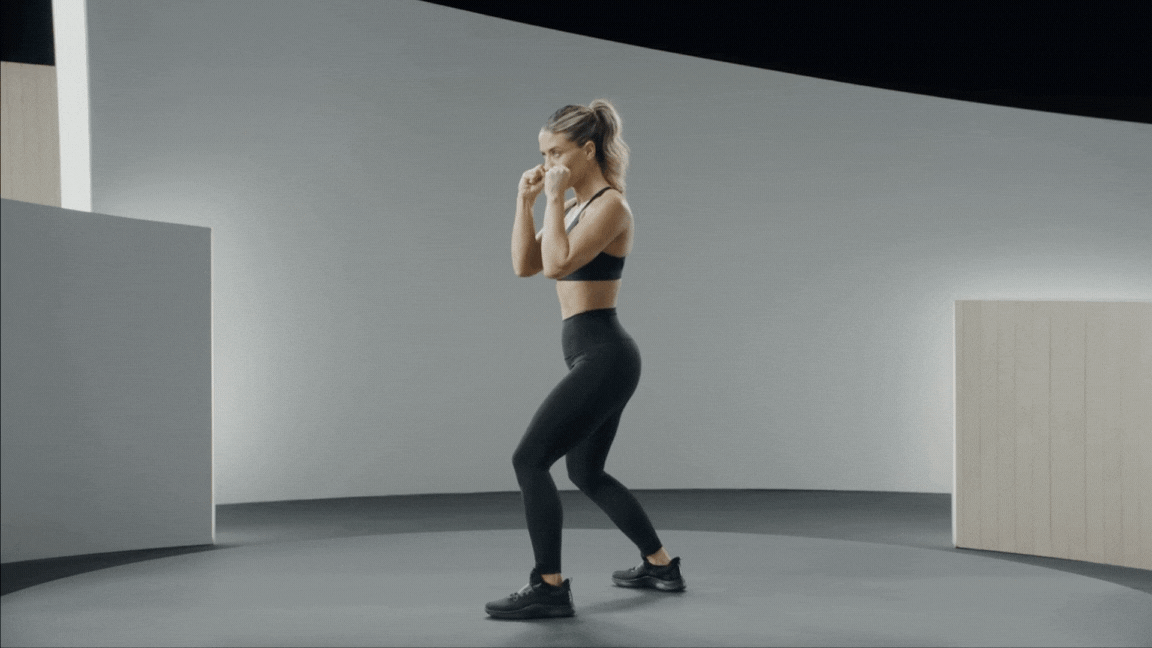
Front Hook
The front hook can be targeted at many places on your opponent's body, making it a versatile move, according to Kendall. “Hooks connect to the side of the face (upstairs) or to the oblique/liver area (downstairs),” Kendall says. “Hooks are usually used in combination, but you can also throw two hooks at the same time—upstairs and downstairs—to knock your opponent out.”
How to Throw a Front Hook
Start in a boxing stance.
Swing your front arm in a hook motion and rotate your hips, shoulders, and core as your front foot pivots. Your arm should be parallel to the floor, and your palm should face your body.
Your front elbow, wrist and shoulder should all be in line and eye level.
Return your front hand to your chin.
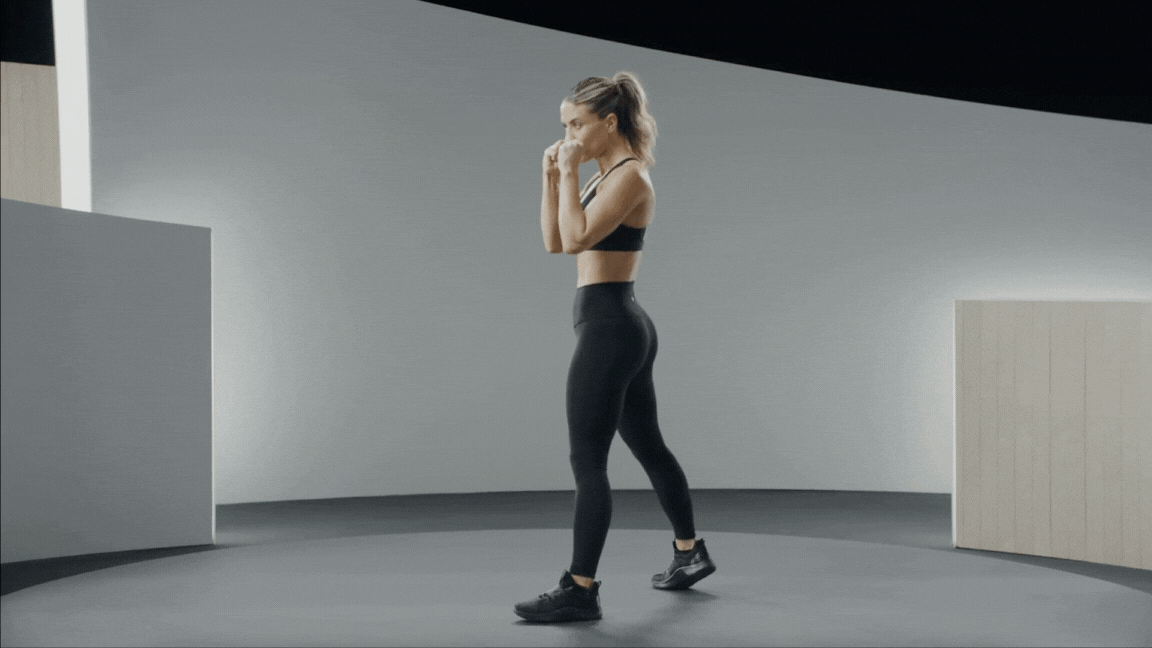
Back Hook
Turn to rear hooks when you find yourself “in the corner” or in close proximity with your opponent.
How to Throw a Back Hook
Start in a boxing stance.
Place most of your weight on your back leg so that it can propel you forward.
Swing your back arm in a hook motion and rotate your hips, shoulders, and core as your back foot pivots. Your arm should be parallel to the floor, and your palm should face your body. Keep your front hand in front of your face to guard it.
Return your back hand to your chin.
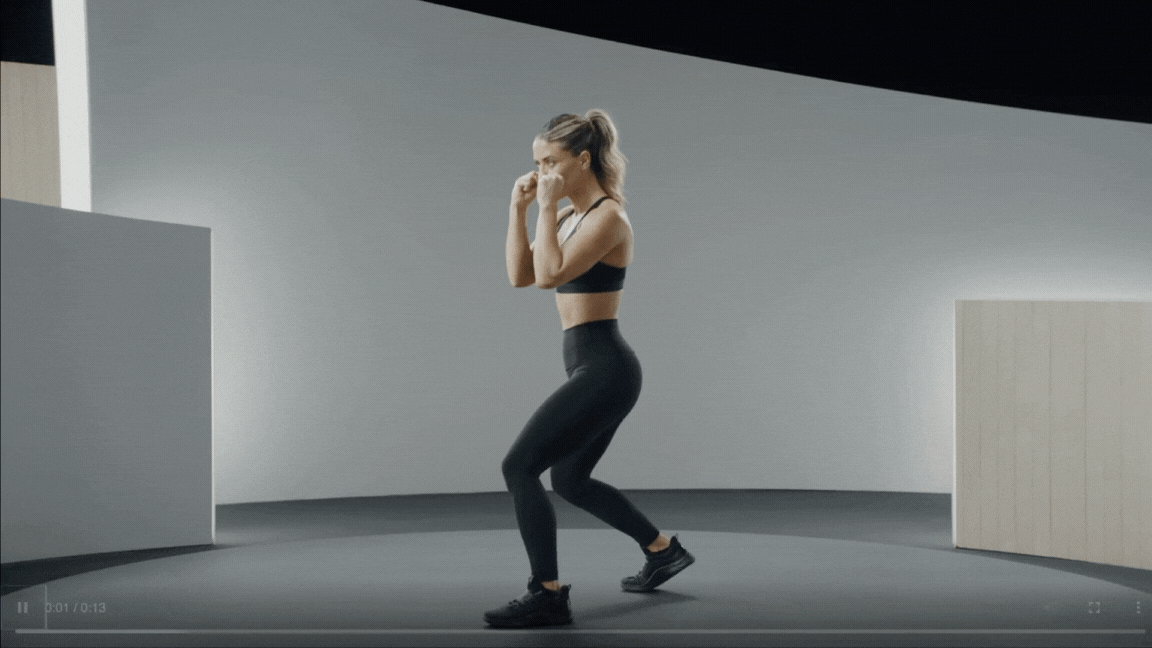
Front Uppercut
“The goal [of an uppercut] is to connect with your opponent’s chin,” says Kendall. Of course, we’re just making contact with the air or with a bag for now—but keeping this visual in mind can help you perform this move properly.
How To Throw a Front Uppercut
Start in a boxing stance.
Shift the majority of your weight into your front foot. Drop your front fist and elbow. Your palm should face your body. Protect your chin with your back hand.
Rotate your hips forward and punch upward.
Return your front hand to your chin.
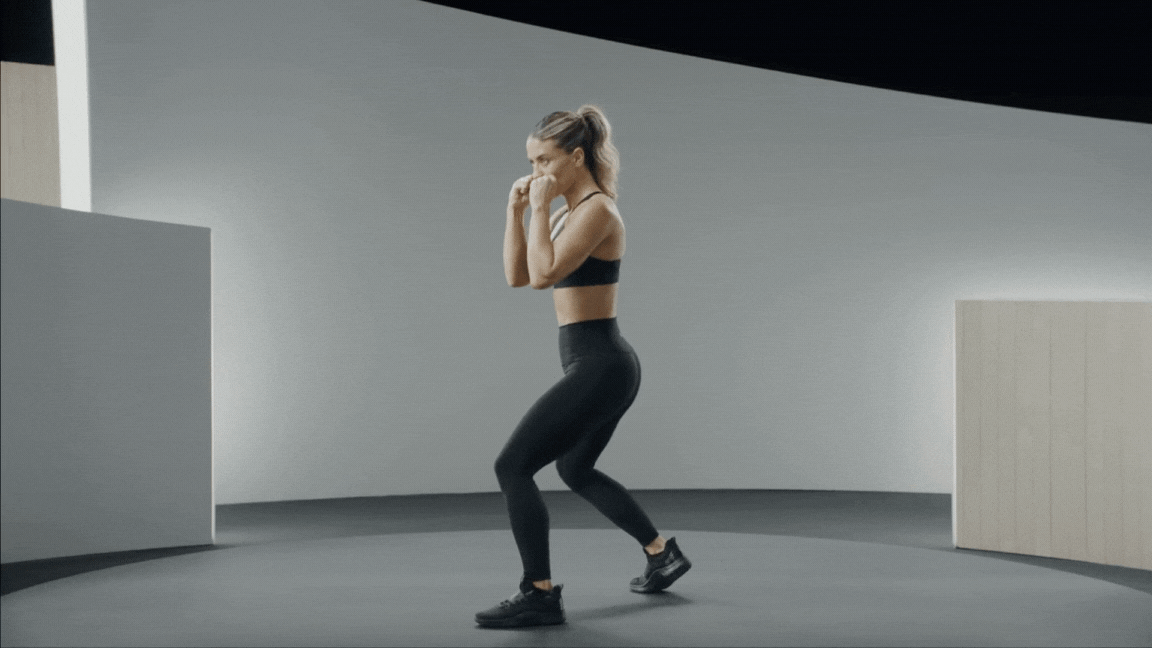
Back Uppercut
Like your back hook, your back uppercut becomes useful when you’re fighting in close proximity to your opponent or while in the danger zone.
How to Throw a Back Uppercut
Start in a boxing stance.
Shift your weight into your front leg. Drop your back hand and elbow. Your palm should face your body.
Rotate your hips and punch upward with your back hand. Use your front hand to cover and protect your chin.
Return your back hand to your chin.
Defensive Moves in Boxing
Defensive boxing moves are just as critical to mastering the basics of boxing. Ahead, learn about two moves you can use to avoid being punched by your opponent.
Ducking
Ducking is just what it sounds like. When you duck, you drop your body down to avoid your opponent’s fist. The difficulty in this move lies in the timing. However, once you master it, your body is positioned in a way that’s beneficial for landing offensive punches.
How to Duck
Start in a boxing stance, with knees bent slightly, back straight, and your core engaged.
Bend both legs deeply at your knees so your body “drops” down, avoiding contact with your opponent.
Make sure not to drop down too far. (Imagine your opponent’s punch landing just above your head.)
Return to your starting position.
Slip
A “slip” is the act of dodging your opponent, or moving to the opposite side of their punch. For example, if your opponent tries to hit you with a jab, you can move to the side to keep them from making contact with your face.
How To Slip, Step-by-Step
Start in a boxing stance.
Whichever way you want to slip, rotate your hips in that direction, leaning your head one way or another to get you out of the way of your opponent’s punch. Bend your knees.
Throughout this entire move, you should still feel balanced and in control.
Return to your starting position.
The Takeaway
While boxing might look like an intimidating sport if you see it on TV or in the movies, the six punches and two defensive moves above are all you need to get started. Once you’re comfortable with the form, you can add in some footwork and begin learning boxing combinations that piece together all of the moves. Looking to get started? Peloton’s Shadowing and Boxing Bootcamp classes on the Peloton App will work your full body while challenging your mental agility.
Level up your inbox.
Subscribe for a weekly dose of fitness, plus the latest promos, launches, and events.




